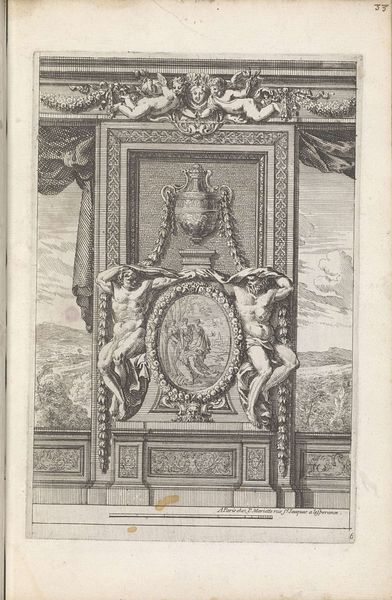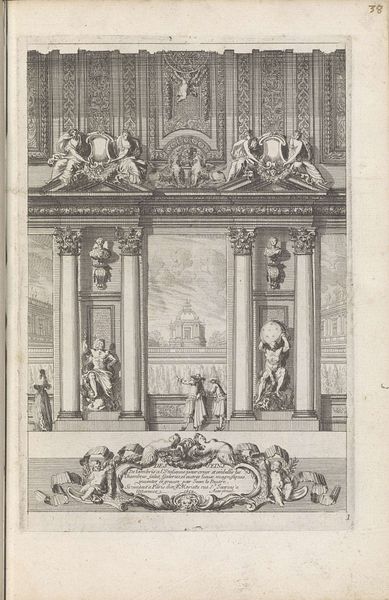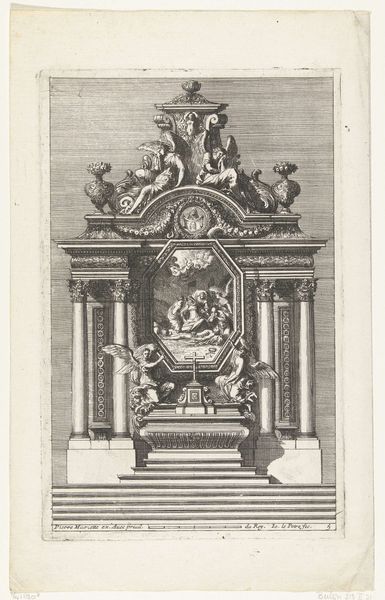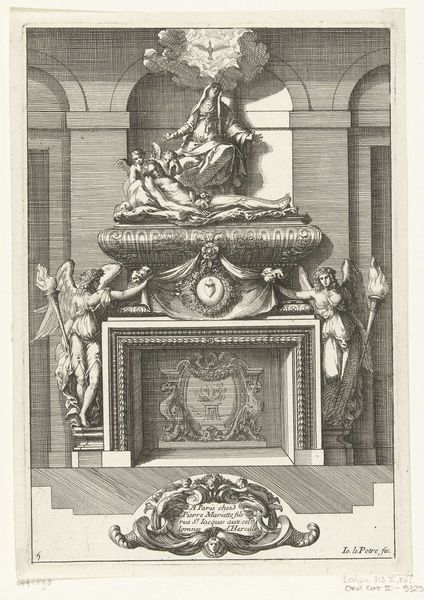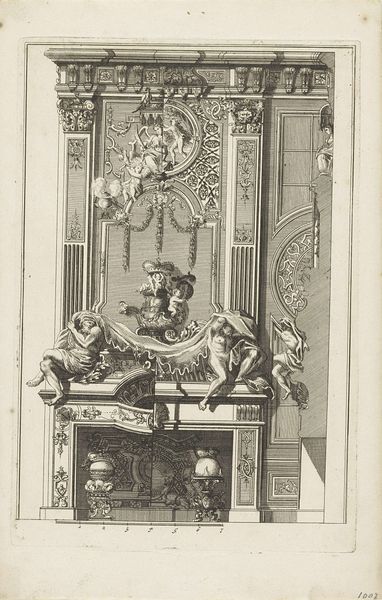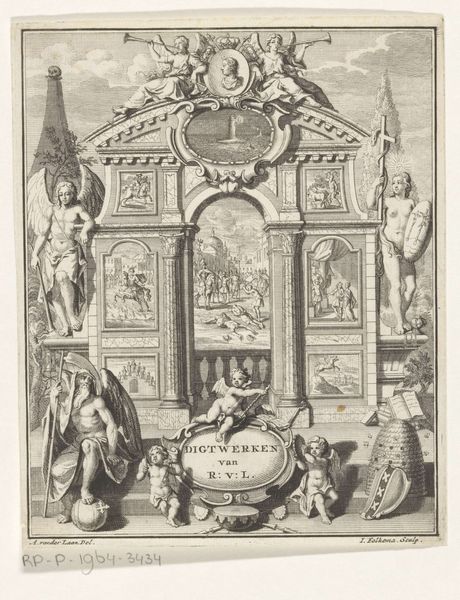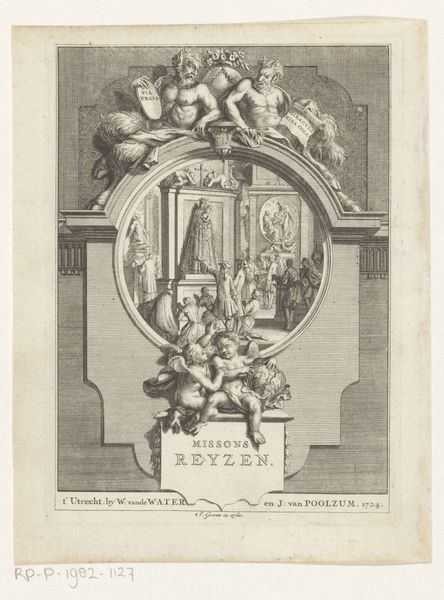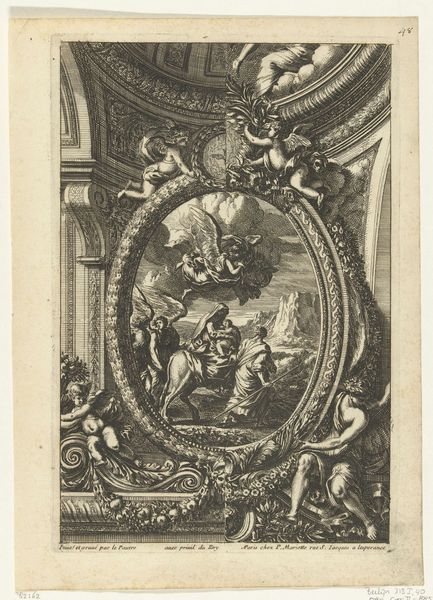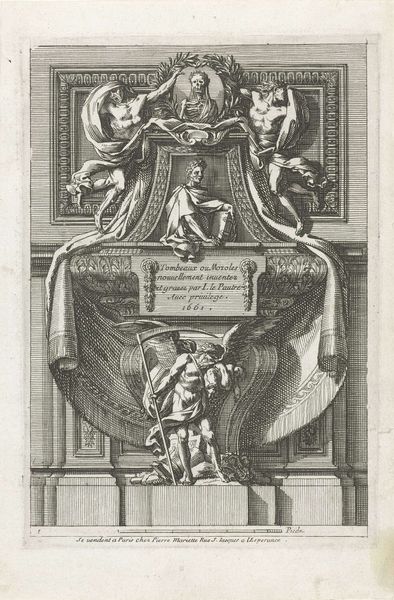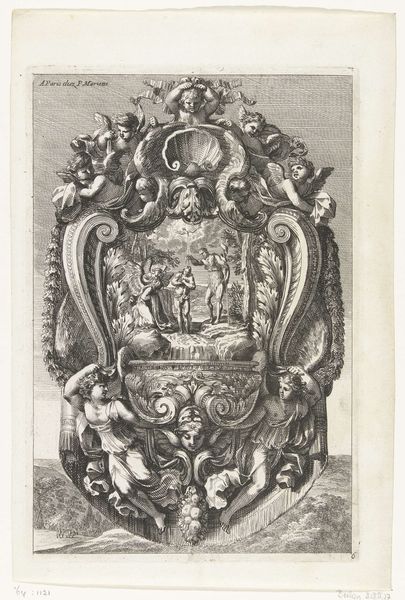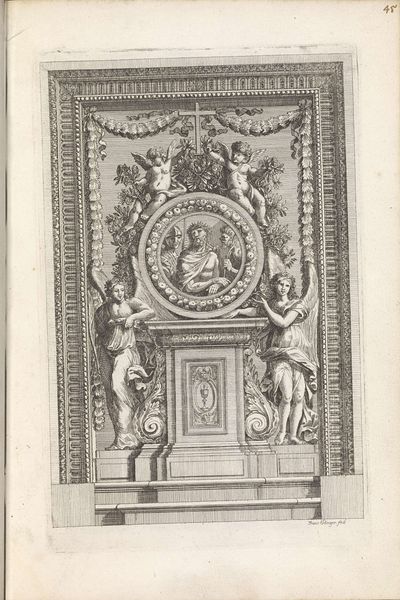
engraving
allegory
baroque
engraving
Dimensions: height 225 mm, width 146 mm
Copyright: Rijks Museum: Open Domain
Curator: We're looking at "Tabernacle with a Medallion with Chalice and Host", an engraving dating back to between 1658 and 1678. It's currently housed here at the Rijksmuseum. What are your first impressions? Editor: The texture is really compelling. The varying densities of the hatching and cross-hatching create this palpable sense of weight and substance, especially in the draped fabric at the top. You can almost feel the weight of the material. Curator: Indeed, Ertinger uses the Baroque style to its full advantage, focusing on opulent detail and allegorical meaning. Note how the composition guides the eye upwards, from the sleeping figures at the base, through the angelic figures, towards the chalice and host at the center, and finally to the bust of Christ at the apex. Editor: Yes, the materials being depicted are fascinating here. The chalice, a finely crafted metal object that has most assuredly been made by hand; the crisp, thin wafer of the host... I wonder what the division of labor looked like in producing and circulating images like these. Was the artisan who produced the host aware that images of it would be circulated? Curator: It prompts questions about artistic agency in a religiously driven context. Notice, too, the placement of the cherubic figures – framing and presenting the medallion to the viewer. They symbolize innocence and divine guardianship. Semiotically, it reinforces the idea of sacred protection surrounding the Eucharist. Editor: It speaks to the political and social power vested in the image and its reproducibility. It suggests ways that this image functions to materialize, give material presence, to otherwise abstract theological claims. Curator: Precisely. It creates a tangible representation of abstract theological concepts. This use of allegory was prevalent during the Baroque period as a means to communicate complex ideas to a wider audience. Editor: And the very materiality of the print—the ink, the paper—its existence speaks to a network of resources, to the circulation of both materials and ideas in the 17th century. Curator: A fine demonstration of how close formal examination reveals symbolic structure! Editor: And I'd say the act of considering its making adds dimensions that speak to its broader significance within the history of art and material culture.
Comments
No comments
Be the first to comment and join the conversation on the ultimate creative platform.
